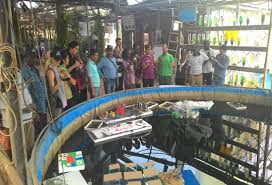
"The important thing is not to stop questioning. Curiosity has its own reason for existing. One cannot help but be in awe, contemplating the mysteries of eternity, of life, of the marvelous structure of reality. It is enough if one tries merely to understand a little of this mystery every day." Albert Einstein
In a world that is becoming increasingly complex, where global problems require multidisciplinary solutions, where citizens and communities need to be creative and analytical in the way they deal with problem-solving. Our education process needs to be measured not only by what we know but also by what we can do with that knowledge and even by our ability to develop and combine this knowledge. It is more important than ever for our children and youth to be equipped with the knowledge and skills connected to the 21st-century reality, where change is becoming the only constant.
In this context, all learners should be prepared to think deeply and critically, to get the know-how and the skills for creative and analytic thinking so that they have the chance to become the innovators, educators, researchers, and leaders who can solve the most pressing challenges facing our world, both today and tomorrow.
These are the types of skills that students learn through Science Education using STEM as a curriculum based on the idea of educating students in four specific disciplines — science, technology, engineering, and mathematics — in an interdisciplinary and applied approach. Rather than teach the four disciplines as separate and discrete subjects, STEM integrates them into a cohesive learning paradigm based on real-world applications.
While it is almost impossible to list every discipline, some common areas include aerospace, astrophysics, astronomy, biochemistry, biomechanics, chemistry, mathematical biology, nanotechnology, neurobiology, nuclear physics, physics, and robotics, among many, many others. As evidenced by the vast variety of disciplines, it is clear that the Science Education fields affect virtually every component of our everyday lives.
This new science education approach is connecting the dots and providing the educational system with more tools for quality education, integrating knowledge and methods from different disciplines, using a real synthesis of approaches and principles that we should especially pay attention to Interdisciplinary, Creativity, and Relevance to reality.
-The STEAM approach is connecting the dots and providing the educational system with another tool for quality education; integrating knowledge and methods from different disciplines, using a real synthesis of approaches.
-In a world where technology has been integrated into our daily lives and in which global problems require multidisciplinary solutions, citizens and communities need to be creative and analytical in the way they deal with problem-solving. This Educational approach provides the tools for this kind of approach. We must give the importance it deserves to creativity in order to succeed in a world where change is becoming the only constant.
-What separates this approach from traditional science and math education is the blended learning environment and showing students how the scientific method should be applied to everyday life. It teaches students different thinking and focuses on the real world applications of problem-solving.
Nowadays we add to STEM an A, for arts. The addition of the arts to the original STEM framework is important as practices, such as modeling, developing scientific explanations, engaging in critique, which often underemphasized in the context of math & science education.
The course designed by The Aharon Ofri MASHAV International Educational Training Center is aimed at directors of education departments in education Ministries, Principals, and supervisors of primary and secondary schools; Educational staff at schools, Training institutions, whose responsibilities involve the allocation of resources and development of educational policies. It is based on the vast experience the Israeli education system has acquired over the years in working towards an educational environment contributive to sustainability and globalization.
Aims
*To analyze the place and role of Science in Education within national development
*To acquaint the participants with new concepts, methods, and tools regarding sciences education
*To develop Math -thinking skills through games and practices
*To present various educational projects and curriculum models used in Israel
*Policy-making, didactic and administrative aspects, and teacher training courses.
*To share and exchange experiences and knowledge gained in the participants’ countries of origin
*To adapt the teaching environment to new pedagogical approaches
*To elaborate on the concept of Science in education
*To acquaint participants with a variety of learning methods and applications
Main Subjects
*Policies in Science Education: How to adapt them in teaching planning to the socio-economic realities of the country
*Knowledge and ability to teach the ‘Nature of Science’(i.e. the key principles and ideas behind scientific knowledge)
*Comparison; Deduction; Identifying components and relationships;
*Potential solutions for problem-solving; Hypothesis; separating variables; Presentation of information and/or knowledge in diverse ways.
*Interactive Science and Math’s projects with real-life applications
*Creation of original solutions to real-world problems
*Participant collaboration and discussion promoting higher order thinking skills
*Interdisciplinary academic environment
*Creativity development
*Study and discussion about different areas and curriculum models
*The use of teaching aids from simple and low-cost materials to modern and sophisticated instruments
*Teachers’ training - needs, policy, and realities
- Date: